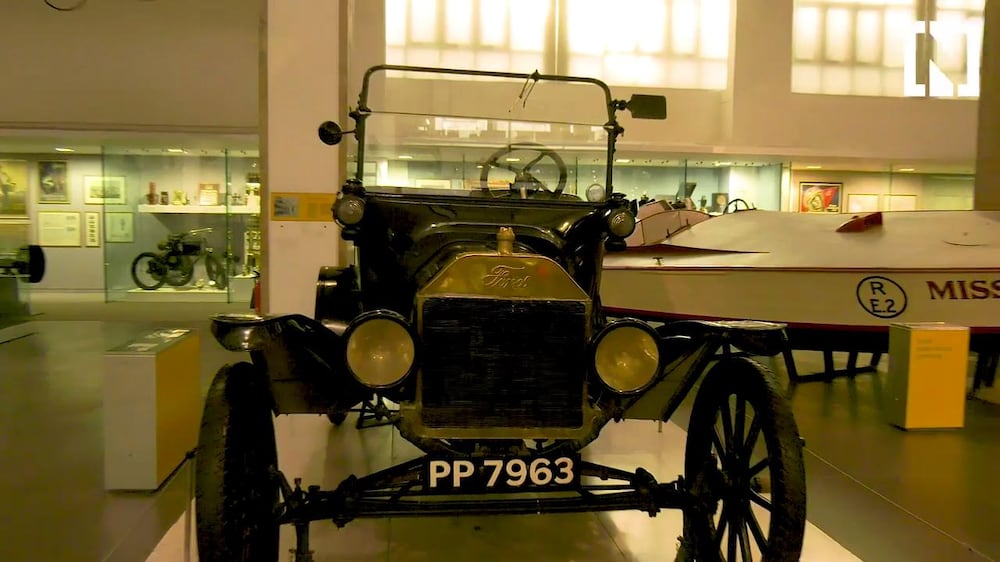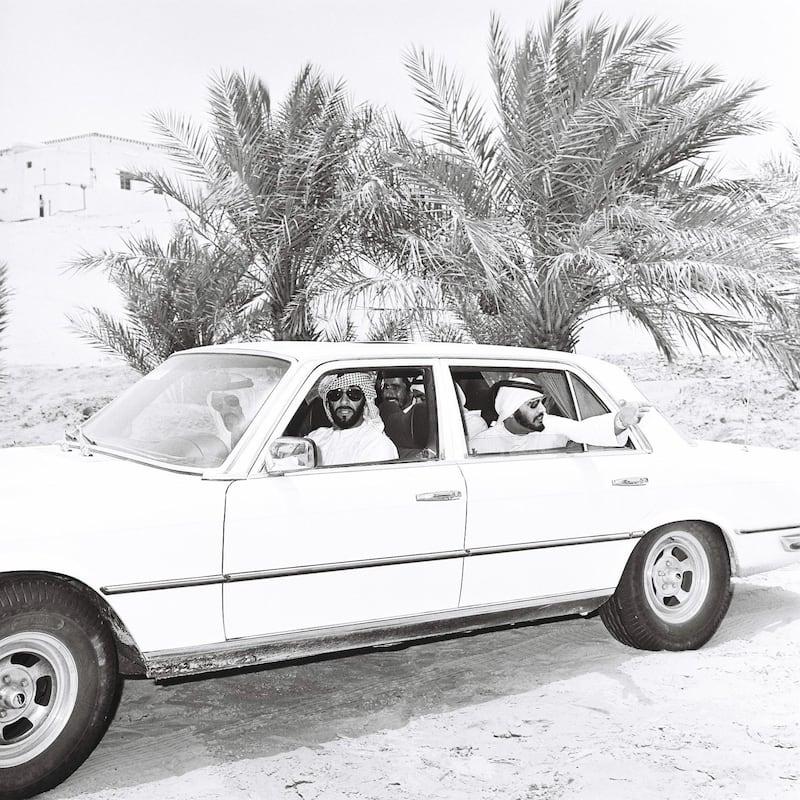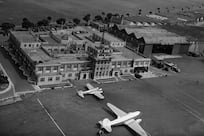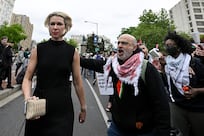The age of the internal combustion engine began when a wife took her husband’s newly-built car without permission to visit her mother. It was August 1888 and the woman was Bertha Benz, whose husband, Karl, was the inventor of the Benz Patent-Motorwagen.
Early demonstrations of the spluttering Benz had failed to convince the public of its use, and the commercial prospects for the world’s first car looked grim. Enter Mrs Benz – gathering two of her sons, she left her home in Mannheim, Germany, to drive the 106 kilometres to her mother’s house in Pforzheim, becoming the first person to drive an automobile over more than a short trial distance and proving the car’s use to the general public.
The drive took an entire day and was fraught with problems: the three-wheel car frequently overheated and the brakes needed to be repaired with shoe leather. Fuel was another test of ingenuity – the Benz ran on ligroin, a cleaning solvent similar to petrol. But after stopping at a chemist in Wiesloch, the shop inadvertently became the world’s first service station.
The following day, Mrs Benz drove back to her astonished husband, whose now-reinvigorated company would, years later, merge with another named for creator Emil Jellinek’s daughter, Mercedes. The rest, as they say, is history.
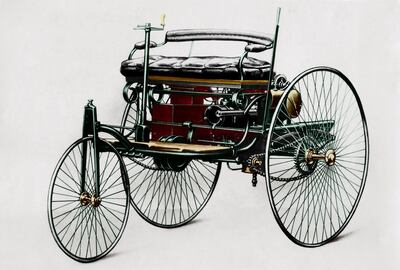
One hundred and twenty nine years later, the obituaries are finally being written for the internal combustion engine. It has had a good run. Henry Ford made the car available to the common man with the Model T in 1908 and his company has since produced over 350 million vehicles. Annual car production worldwide is now around 60 million.
If the car is still as popular as ever, the same cannot be said of its engine. It is blamed for polluting the air of our cities and contributing significantly to climate change. It consumes vast quantities of finite hydrocarbons and kills an estimated 1.3 million people a year – that’s the equivalent of four A380 superjumbo jets crashing every day.
The internal combustion engine cannot be blamed for those deaths – and the estimated 20 to 50 million injured in road accidents annually – but the electric future that will replace petrol and diesel is bound closely to driverless vehicles and the expectation that our roads will be safer, as well as cleaner.
Nowhere will this seismic change be felt more deeply than in the United Arab Emirates. The country’s love affair with the internal combustion engine runs deep. This is the home of the world’s biggest Rolls Royce dealership, a country whose police drive a Bugatti Veyron and where a personalised number plate of simply “5” recently sold for Dh32 million.
No records have been found for the first car in what is now the UAE, but at least two vehicles arrived in 1936, with a geological expedition to search for possible sites to drill for oil.
Imported from Bahrain, the first petrol powered vehicles to arrive were a saloon car, probably a British-built Daimler, and a pick-up truck, likely a Dodge or a Ford.
Both vehicles struggled with the conditions, frequently bogging down in the glue-like soil of the sabkha after rain and having to be loaded onto the desk of a dhow for longer stretches. Driving into the interior, the geologists found many who had never seen a car before and who fled at the sound of its horn.
Archive records show that these cars were perhaps not alone in the region, however – at the request of Sheikh Hamad Al Khalifa, the Ruler of Bahrain, British officials searched dealers in what is now Pakistan in 1929. It took over three years, but the ruler was eventually sold a reconditioned Studebaker from T.A. Jeewanji & Sons of Karachi.
Around the same time, there are also passing references to a vehicle belonging to Sheikh Rashid bin Saeed Al Maktoum, then Crown Prince of Dubai and in his mid-20s. It is Sheikh Rashid who once remarked: "My grandfather rode a camel, my father rode a camel, I drive a Mercedes, my son drives a Land Rover, his son will drive a Land Rover, but his son will ride a camel," reflecting his cautiousness with regards to the sustainability of financial reliance on oil.
The end of the Second World War and the renewed push for oil exploration in the 1950s ushered in the age of the petrol engine. Land Rovers, developed from a British military vehicle, began to arrive in large numbers along with the more powerful American Dodge Power Wagon, which had the added appeal of smoother suspension and air conditioning.
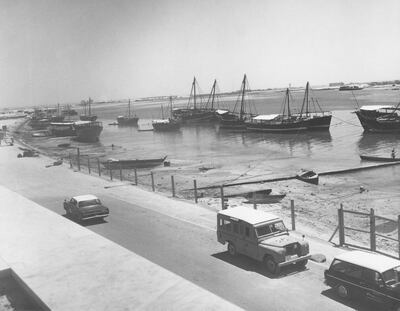
Some wanted something with a little more flair: despite the lack of roads and the challenges of desert driving, it was American cars that represented luxury and glamour in 1950s Abu Dhabi and Dubai. The Ruler of Abu Dhabi, Sheikh Shakhbut bin Sultan, acquired a bright yellow Cadillac in which he drove to a historic border summit in Buraimi with the Sultan of Oman in 1955, accompanied by a lorry load of guards to push it out of the sand when it (frequently) got stuck.
The Ruler’s brother, Sheikh Hazza bin Sultan, preferred a red and white 1957 Ford Ranchero. Sheikh Zayed bin Sultan, in his first years as Ruler of Abu Dhabi, preferred to drive a 1962 Chevrolet Bel-Air on his desert travels.
In March 1958, oil was discovered. As it began to flow in 1962, so did widespread prosperity. Cars became a symbol of this new wealth, even though the only roads were hard packed sand tracks through town. In Dubai, the newly formed Al Futtaim Motors organised the first shipment of Toyota Toyapet saloon cars as well as Land Cruisers, probably the UAE’s most emblematic vehicle.
1962 also saw the establishment of what would become the Emirates Motor Company, a dealership selling Mercedes in Abu Dhabi and Al Ain.
Four years earlier, the founder, Abdul Jalil Al Fahim had gambled on setting up an automobile spares workshop next to a small family textile and grocery store on the Al Ain Road. By 1967, Al Fahim’s order of 13 ultra-luxury Mercedes-Benz 600 Pullman cars was causing such astonishment in Stuttgart that the Germans sent a delegation to Abu Dhabi, instructed to investigate how a car traditionally associated with world leaders and movie stars was now under huge demand in the desert.
Over the next decade, sand gave way to asphalt; roads reached out from Dubai to Sharjah and the Northern Emirates. The old camel route from Al Ain to Abu Dhabi was replaced with tarmac and by the mid-1970s, a highway finally connected the new capital of the UAE and Dubai.
_______________
Read more:
[ End of the internal combustion engine, part 2: how climate change drove the race for an alternative ]
[ End of the internal combustion engine, part 3: the age of the electric vehicle begins ]
[ End of the internal combustion engine, part 4: an affection for classic cars lives on ]
_______________
For the next 40 years, the internal combustion engine ruled the roads of the UAE. Gas guzzling, fully loaded opulence seemed to define the country’s image. Sheikh Zayed switched his Chevrolet Bel-Air for German vehicles, including a Mercedes-Maybach, as the first President of the UAE. Infirmity was no barrier – even in old age, he still liked to take to the roads to see his people. You can still see the handle fitted just above the passenger seat door to help him get inside on his white BMW at the Sheikh Zayed Centre in Al Bateen.
It was inevitable that Abu Dhabi would later join the elite world of F1 motorsport with its Yas Marina circuit and that the capital would become the backdrop for one of the films in the car-fanatical Fast and Furious film franchise, Furious 7.
With a canny sense of publicity, Dubai added an increasingly exotic series of cars to its police force, ensuring the kind of international media attention money cannot buy. Newcomers to the emirates would look around at red traffic lights open mouthed, realising that their fellow drivers were sitting in millions of dirhams’ worth of Ferraris, Porches and Maserati.
In this sort of car obsessed culture, the internal combustion engine seemed destined to rule for ever. But things are changing. Electric charging stations are being added to many locations, while Tesla, the electric car manufacturer created by Elon Musk, has opened its first Middle East showroom and service centre in Dubai. Numbers are few, and the first model remain a novelty – but then, 130 years ago, so was Bertha Benz and the Benz Patent-Motorwagen.
History of the internal combustion engine
